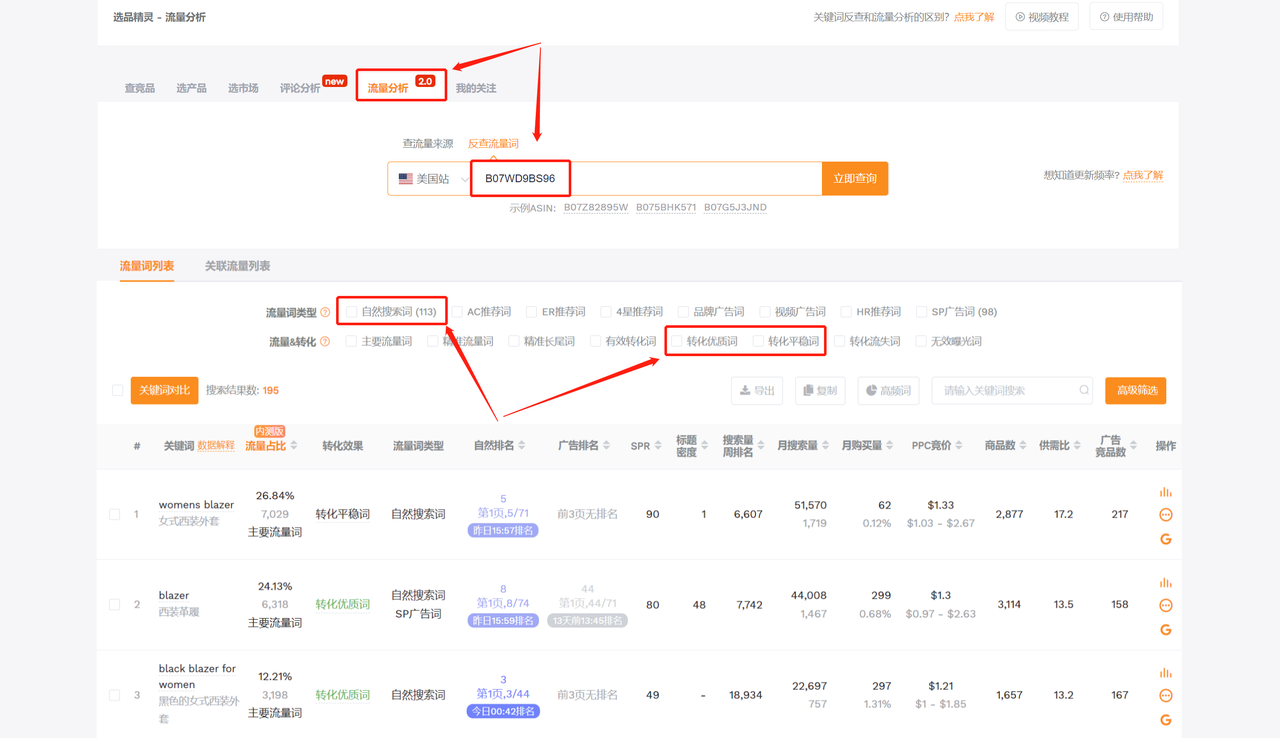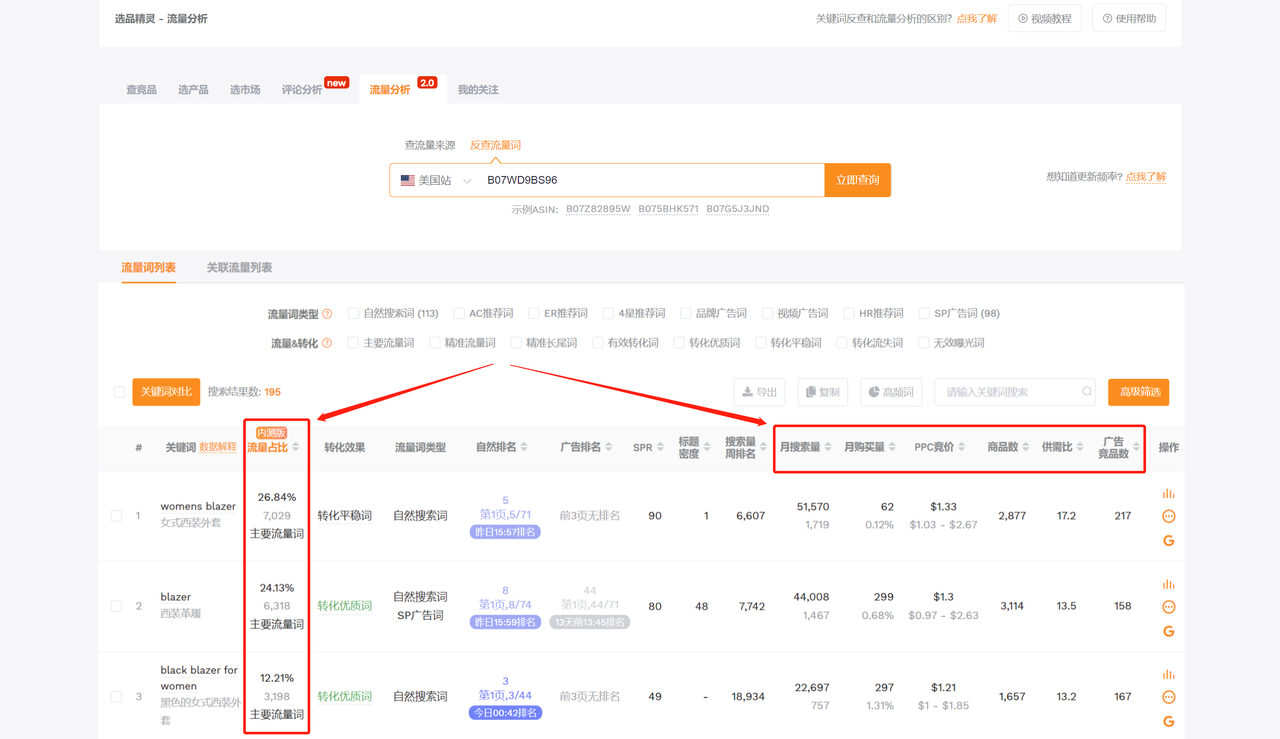How to Target Competitor Keywords with Your Amazon Ads?
For Amazon selling, it all boils down to product, and the core of product is to rank for keywords.
Today, we will teach you step-by-step a new "Borrow-a-Chicken-to-Lay-Eggs" keyword strategy, revealing advanced Amazon selling tactics to help you break through and outperform.
01. Filter Traffic Keywords that Fit Your Needs
Using third-party tools, quickly find competitor products similar to your own on Amazon, and then reverse-engineer their traffic keywords. Through certain criteria, find traffic keywords that highly align with your product. This is the first half of what we call "Borrow-a-Chicken-to-Lay-Eggs."
Below is a brief overview of the operation steps:
1. Identify Competitor Products
To leverage the power of competitors, first identify approximately 5-10 competitor ASINs that meet the following conditions:
- Highly similar to your product (to ensure keyword accuracy)
- Listed within the last 1-2 years (to ensure market potential)
- Ranked highly and consistently (to ensure keyword weight and exclude ranking factors that suddenly rise due to off-site factors or other reasons)
2. Reverse-Engineer Competitors' Main Traffic Sources
Use Seller Sprite's 【Traffic Analysis】tool to reverse-engineer competitor's traffic keywords and find out which search terms drive their organic orders. Where exactly does their product traffic come from?

(Source: Seller Sprite -> Traffic Analysis Tool)
3. Filter Product Keywords
Then, from the organic search terms, find keywords with good conversion performance: "high-conversion keywords", "stable-conversion keywords", or keywords with a major traffic share, and collect them as your traffic keyword candidates.
High-Conversion Keywords: Refers to traffic keywords with a conversion rate ≥ 5% and weekly search volume ≥ 2000, or a conversion rate ≥ 10% and weekly search volume ≥ 1000 in ABA data;
Stable-Conversion Keywords: Refers to traffic keywords with a conversion rate ≥ 3% and weekly search volume ≥ 500 in ABA data in the last 2 weeks;

(Source: Seller Sprite -> Traffic Analysis Tool)
4. Determine Traffic Keywords that Fit Your Needs
Sort the collected keywords by traffic share. Select keywords with: high monthly search volume, high monthly purchase volume, high supply-demand ratio, low PPC bid, and low number of competing products.
And you can search for these keywords on the Amazon storefront to find competitor products that highly match your product, further determining keyword relevance, thereby more quickly, accurately, and effectively positioning your market share.

(Source: Seller Sprite -> Traffic Analysis Tool)
After filtering out the keywords, follow suit and apply them to your Listing and advertising to increase product exposure and clicks, and improve order conversion rates. This is the second half of "Borrow-a-Chicken-to-Lay-Eggs."
02. How Advertising Tools Efficiently Coordinate with Traffic Keywords
Even if you master more Amazon selling techniques, ultimately it still boils down to practical operation. At the operational level, ad management is indispensable for sellers. How should you use advertising tools to efficiently coordinate with keywords?
Scenario 1: Monitor Advertising Data
Statistically analyze corresponding data performance by time (day/week/month), or by ad campaign, ad group, keyword, and other types.
For example: View the details of keyword impressions and clicks within a week, and summarize which day of the week has higher traffic. This way, we can increase keyword bids and budgets on that day to increase exposure and clicks; or when doing Lightning Deals, adjust the effective time to that day to get more traffic.
 +
+
(Source: YouMailCloud -> Ad Management Tool)
Scenario 2: Multi-Dimensional Analysis of User Search Terms
Record and organize user search terms. Break through the 65-day time limit of search term reports, and regularly analyze user search behavior and purchasing preferences to summarize factors such as product market demand and keyword development potential.
For example:
- Judge keyword popularity and weight through weekly search ranking, impressions, and impression share of search terms;
- Judge Listing quality based on the relevance between search terms and products, and traffic conversion performance. Negate irrelevant keywords with one click, and multiply target high-quality keywords;
- Judge keyword development potential by viewing past performance of keywords through whether they were targeted and historical trend displays.
 +
+
(Source: YouMailCloud -> Search Term Tool)
Scenario 3: Multiple Dayparting Strategies, Smartly Adjust Ads
You are fully aware of the keywords you want to adjust, but always fail to adjust them on time for various reasons and do not have time to record. Ad operations are passive, and product orders are sporadic. This is the most fatal damage for those who do Amazon selling.
For example: You already know the peak order period for products is from 8 PM to 8 AM US time, but you are always reluctant to adjust ads late at night due to the time difference, missing the best ad time period and best ad placements, resulting in unsatisfactory ad performance and soaring ad costs.
At this time, YouMailCloud's 【Dayparting Strategy function】 can come in handy, helping you automatically adjust ad bids, budgets, ad placements, and start/stop times.
 +
+
(Source: YouMailCloud -> Dayparting Strategy Tool)
In short, the "Borrow-a-Chicken-to-Lay-Eggs" strategy is to find out which search terms drive organic orders for competitors, and from which keywords your products are actually getting orders. After finding these keywords, borrow these keywords for your own products to reduce trial-and-error costs and achieve the highest return on investment.
To effectively implement "Borrow-a-Chicken-to-Lay-Eggs", you need to use operational tools, but most tools on the market for reverse-engineering traffic keywords and operating ads are paid. Here, we bring you a free benefit to help you easily operate on Amazon!

SellerSpace is a concise tool to manage multiple Amazon accounts, focuses on solving various problems encountered by sellers during operating Amazon business.
Mail:support@sellerspace.com
©2018-2025 SellerSpace.COM All Rights Reserved
Online
Service
